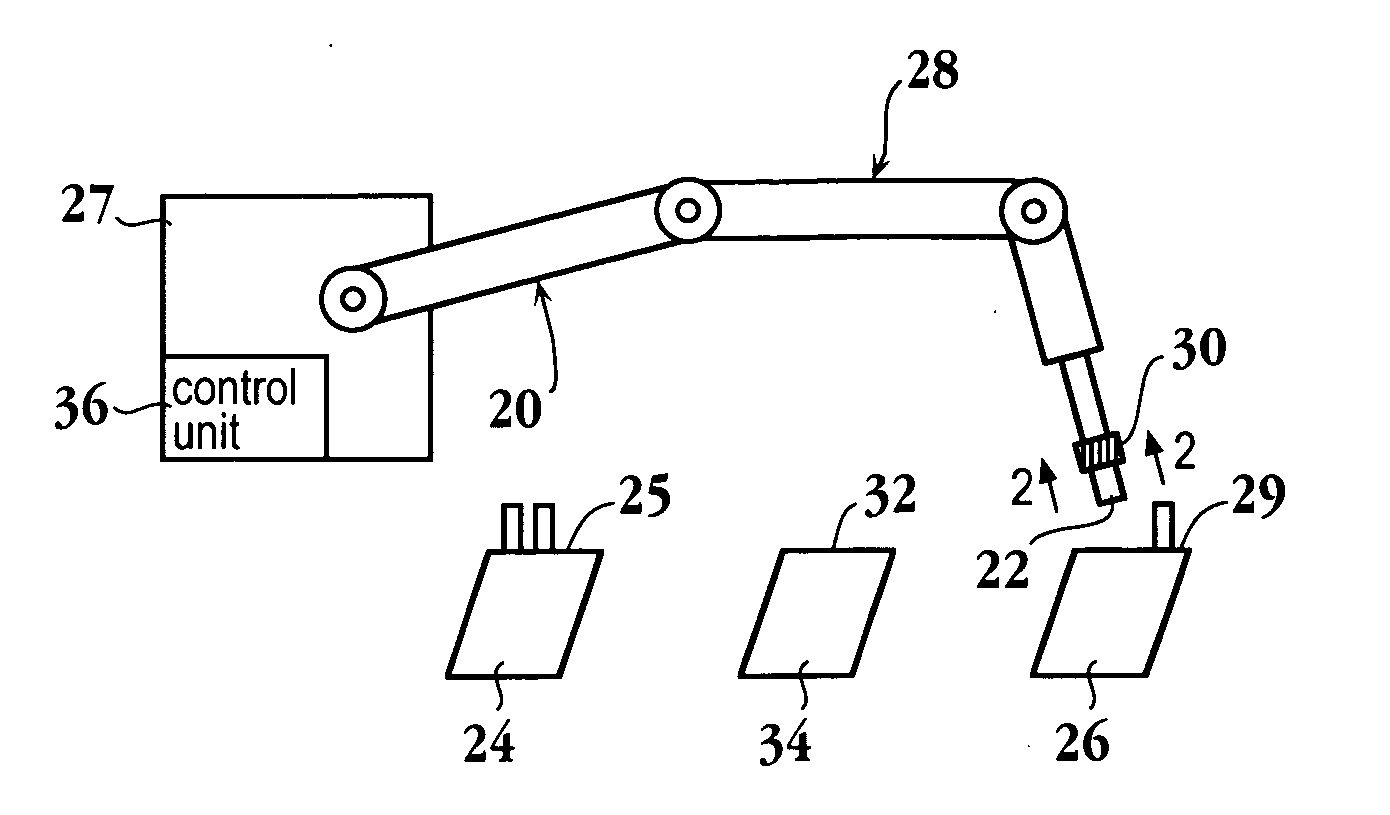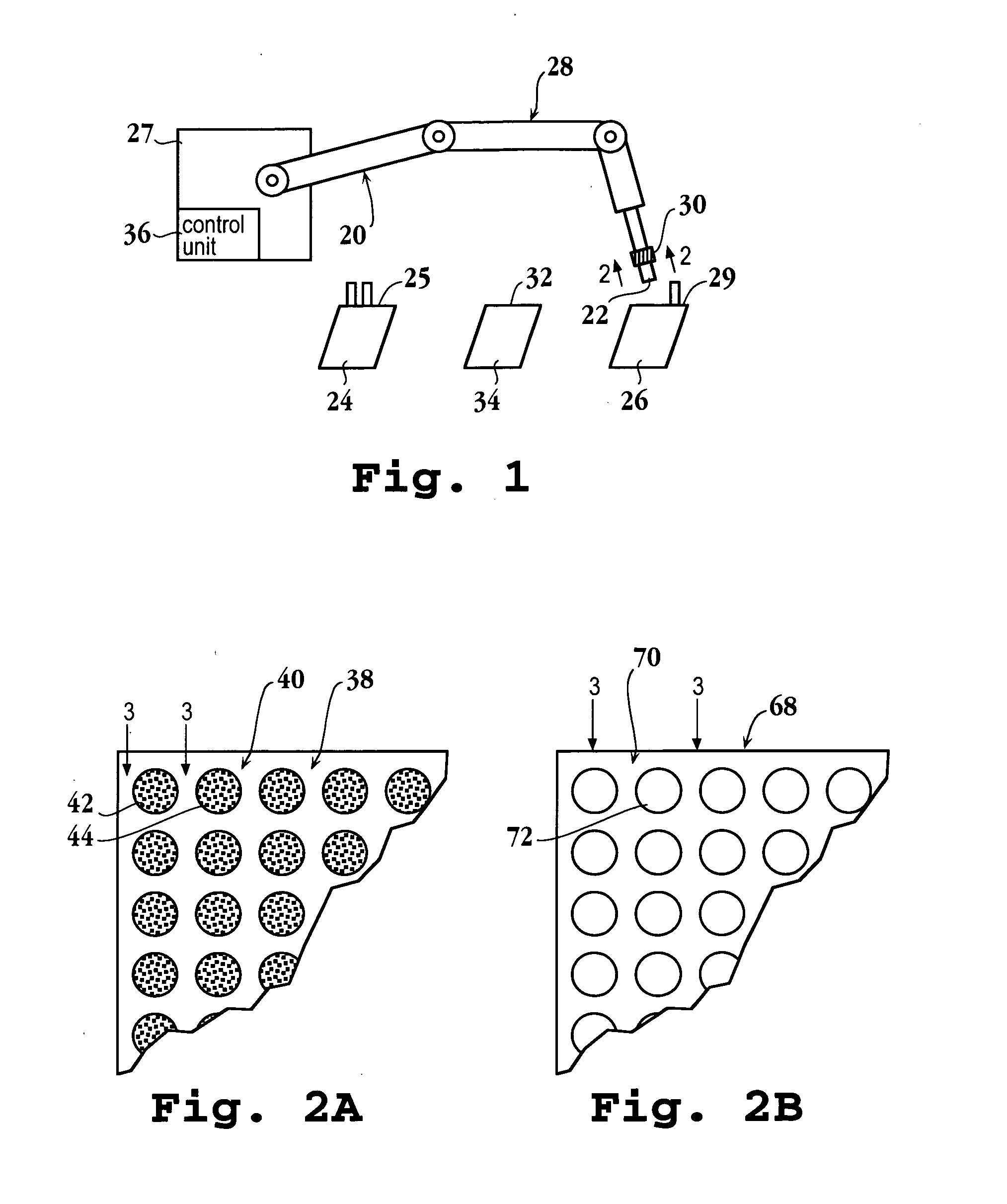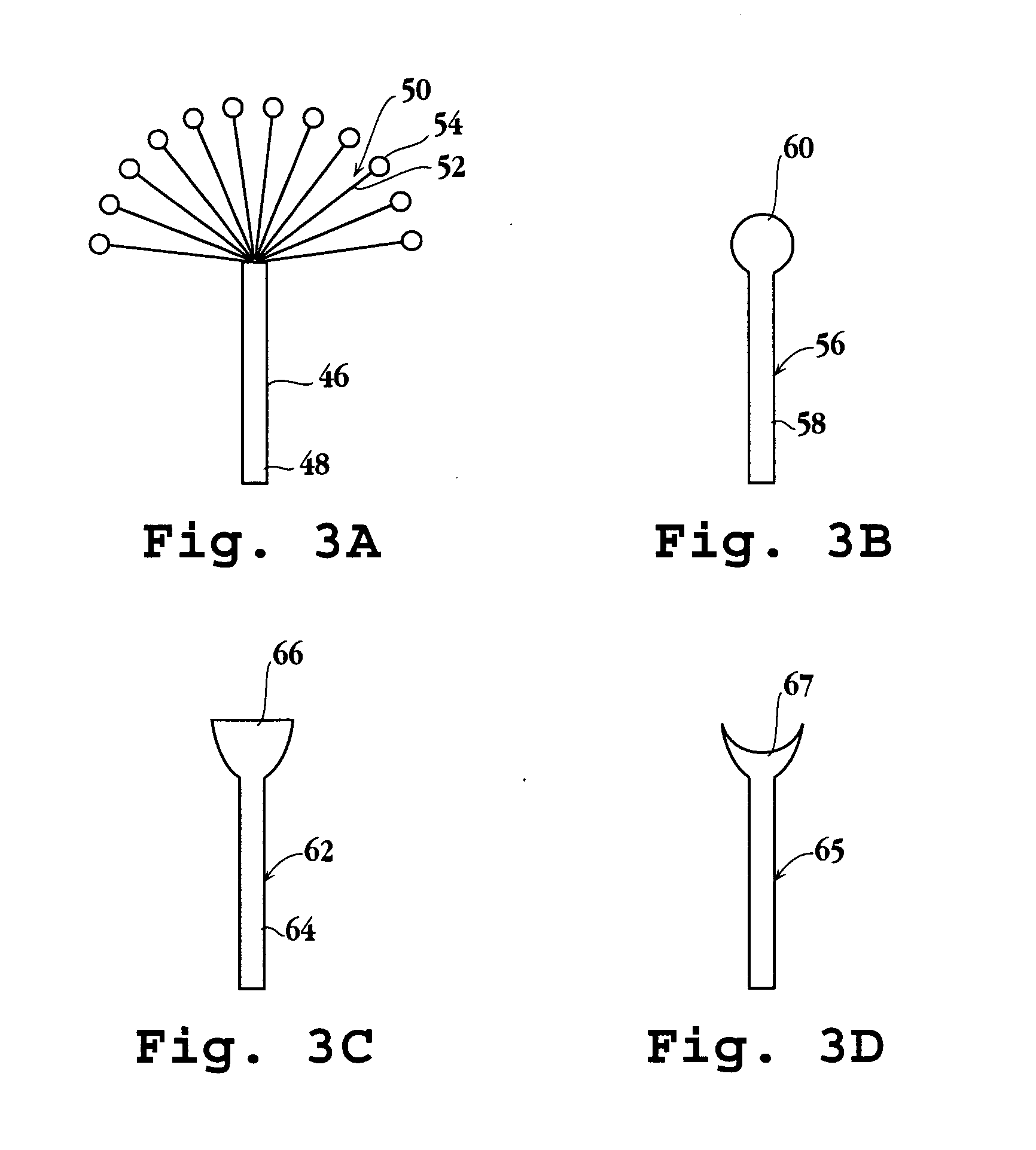Self-cleaning adhesive structure and methods
- Summary
- Abstract
- Description
- Claims
- Application Information
AI Technical Summary
Benefits of technology
Problems solved by technology
Method used
Image
Examples
Embodiment Construction
I. Definitions
[0067] A “nanoscale projection” refers to a raised projection having a radial or side dimension typically in the range between 5 and 2,000 nm.
[0068] A “rounded projection” refers to a projection, e.g., nanoscale projection, having a rounded exterior shape, e.g., hemispherical or hemi cylindrical.
[0069] A projection, including a rounded projection, may be formed as a simple geometric shape, e.g., hemispherical or hemicylindrical shape, or may be formed of an individual seta or group of setae, i.e., a bristle like structures formed of a stalk termination at a distal contact end or tip, or individual or groups of spatular arrays, where each spatula in the array has a stalk terminating at a distal contact end or tip, and a hierarchical setal structure having a setal stalk terminating at a array spatulae.
[0070] A “spatula” denotes a splitting of an elongate surface into two parts, a stalk and a distal-end tip or end. The distal-end tip may be enlarged and have one of a v...
PUM
 Login to View More
Login to View More Abstract
Description
Claims
Application Information
 Login to View More
Login to View More - R&D
- Intellectual Property
- Life Sciences
- Materials
- Tech Scout
- Unparalleled Data Quality
- Higher Quality Content
- 60% Fewer Hallucinations
Browse by: Latest US Patents, China's latest patents, Technical Efficacy Thesaurus, Application Domain, Technology Topic, Popular Technical Reports.
© 2025 PatSnap. All rights reserved.Legal|Privacy policy|Modern Slavery Act Transparency Statement|Sitemap|About US| Contact US: help@patsnap.com



